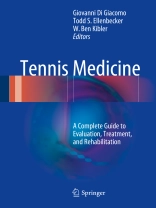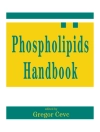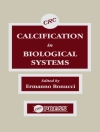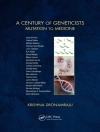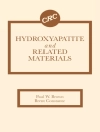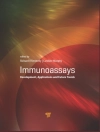This book will serve as a key resource for all clinicians working in orthopedics, sports medicine, and rehabilitation for the sport of tennis. It provides clinically useful information on evaluation and treatment of the tennis player, covering the entire body and both general medical and orthopedic musculoskeletal topics. Individual sections focus on tennis-related injuries to the shoulder, the elbow, wrist, and hand, the lower extremities, and the core/spine, explaining treatment and rehabilitation approaches in detail. Furthermore, sufficient sport science information is presented to provide the clinical reader with extensive knowledge of tennis biomechanics and the physiological aspects of training and rehabilitation. Medical issues in tennis players, such as nutrition and hydration, are also discussed, and a closing section focuses on other key topics, including movement dysfunction, periodization, core training, and strength and conditioning specifics. The expansive list of worldwide contributors and experts coupled with the comprehensive and far-reaching chapter provision make this the highest-level tennis medicine book ever published.
İçerik tablosu
Section I – Biomechanics & Pathophysiology: 1Biomechanics of the Tennis Serve.- 2 Biomechanics of Groundstrokes and volleys.- 3 Epidemiology of Tennis.- 4 Pathophysiology of Tennis Injuries: The Kinetic Chain.- 5 Biomechanics & Physical Properties of the Tennis Racquet, Strings, Ball Contact and Shoe/Court Interface: Implications for Injury in Tennis Players.- Section II – Player Evaluation: 6Physical Evaluation of the Shoulder and Elbow in Tennis Players.- 7 Physical Evaluation of the Hip.- 8 Physical Evaluation of the Spine.- 9 Imaging of the Shoulder and Hip.- 10 Musculoskeletal Screening for the Elite and Developing Tennis Player (The USTA HPP and ATP PIPS).- 11 The Pre-Participation Physical – The WTA Experience & Findings.- 12 Fitness Testing / Screening in Elite Tennis Players.- Section III – Shoulder Injuries: 13 Rotator Cuff Injuries (include Full Thickness and Partial thickness).- 14 Labral Injuries and Posterior Impingement in Tennis Players.- 15 Scapulothoracic Evaluation & Treatment in Tennis Players.- 16 Rehabilitation of the Shoulder in Tennis Players .- 17 Osteo Arthritis and the Senior Tennis Player.- Section IV- Elbow Wrist & Hand Injuries: 18 Pathophysiology of Tendon Injury: Implications for Tennis Elbow.- 19 Humeral Epicondylitis in Elite Tennis Players: (Include injections & Surgical Management) & Indications for Elbow Arthroscopy.- 20 Rehabilitation of the Elbow.- 21 Minimally invasive treatment of wrist and hand lesions in tennis players .- 22 Pathophysiology of wrist and hand injuries in tennis players: tendons, ligaments and TFCC lesions.- 23 Wrist and Hand Rehabilitation.- Section V – Lower Extremity Injuries.- 24 Principles of Hip Arthroscopy in Elite Tennis Players.- 25 Treatment of Labral Injuries & FAI in Tennis Players.- 26 – Rehabilitation of Hip Injuries.- 27 Thigh and Knee Injuries.- 28 Pathophysiology and Treatment of Patellar Tendonitis.- 29 Rehabilitation of Knee Injuries.- 30 Foot and Ankle Injuries in Tennis players: Rehabilitation of Foot and Ankle Injuries including Orthotic Management for Prevention and Treatment of Lower Extremity Injuries in Tennis Players.- 31 Acute Management of Foot & Ankle Injuries (Taping and Padding).- Section VI – Spinal Injury: 32 Injuries to the Spine in Elite Tennis Players & Spondylolisthesis in Developing Tennis Players: Special Considerations and Research Findings.- 33 Spinal Rehabilitation.- 34 Core Stability in Tennis Players.- Section VII – Medical Issues: 35 Key Medical Issues for Tennis Players.- 36 Sports Nutrition for Tennis Players.- 37 Heat Illness and Hydration for Tennis Players.- 38 Special chapter on Tournament Physician Issues at an event.- 39 Dermatologic Considerations in Elite Tennis Players.- Section VIII – Special Topics: 40 Strength and Conditioning in Elite and Developmental Tennis Players.- 41 Movement Dysfunction Syndromes.- 42 Strength & Conditioning of the Hips and Core.- 43 The Role of Scheduling &Periodization in Elite Tennis Players: (chapter on management and planning of player scheduling/off-season /number of matches needed for development etc).
Yazar hakkında
Giovanni Di Giacomo, MD, graduated from University of “La Sapienza”, Rome, in 1988 and obtained his specialty degree in Orthopaedics and Traumatology in 1993. Since 1996 he has been Chief of the Shoulder Arthroscopy Department at Concordia Hospital for Special Surgery, Rome. He has been a tournament doctor for the ATP (Association of Tennis Professionals) WTA since 1995 and a trainer in numerous workshops, seminars, and basic and advanced courses on shoulder arthroscopy. Dr. Di Giacomo is a member of the Board of Directors of the Italian Society of Arthroscopy (SIA), a member of the Upper Extremities Committee at ISAKOS, and an International Affiliate Member of American Academy of Orthopaedic Surgeons (AAOS). His research has been published in internationally recognized journals and he is the author of several books, including the Springer publications Shoulder Instability – Alternative Surgical Techniques (2011) and Atlas of Functional Shoulder Anatomy (2008). He is the inventor of the “Wedged Profile Plate” for the Latarjet procedure develop by Arthrex Inc.
Todd Ellenbecker is Clinic Director of Physiotherapy Associates Scottsdale Sports Clinic in Scottsdale, AZ, USA and Vice President of Medical Services for the ATP World Tour. He is a certified sports clinical specialist, orthopedic clinical specialist, and strength and conditioning specialist. He is also a certified USPTA tennis teaching professional, and Chairman of the USTA National Sport Science Committee. Dr. Ellenbecker received the Samuel Hardy Educational Merit Award from the International Tennis Hall of Fame in 2008 and the Turner A. Blackburn Hall of Fame/Lifetime Achievement Award from the Sports Physical Therapy Association in 2011. He was Chairman of the APTA’s Shoulder Special Interest Group from 1996 to 2002 and serves on the editorial board of the International Journal of Sports Physical Therapy and Sports Health. He has conducted and published research primarily on upper extremity athletes, as well as shoulder and elbow rehabilitation. He is the author or editor/co-editor of a number of books.
W. Ben Kibler is Medical Director for the Lexington Clinic Sports Medicine Center in Lexington, KY, USA, and a long-time member of the USTA National Sport Science Committee. He is also a founding member of the Society of Tennis Medicine and Science as well as a fellow, and former vice-president, of the American College of Sports Medicine. He is a team physician for numerous professional teams, colleges, and high schools in the Lexington area. Dr. Kibler has presented and written prolifically on all areas of sports medicine, but specializes in the upper extremity, shoulder pathology, scapula, and biomechanics of tennis. He is known worldwide as an expert in shoulder mechanics and injury. Dr. Kibler attended medical school and completed his residency in Orthopedic Surgery at Vanderbilt University, Nashville, TN and has been affiliated with Lexington Clinic since July 1977.
